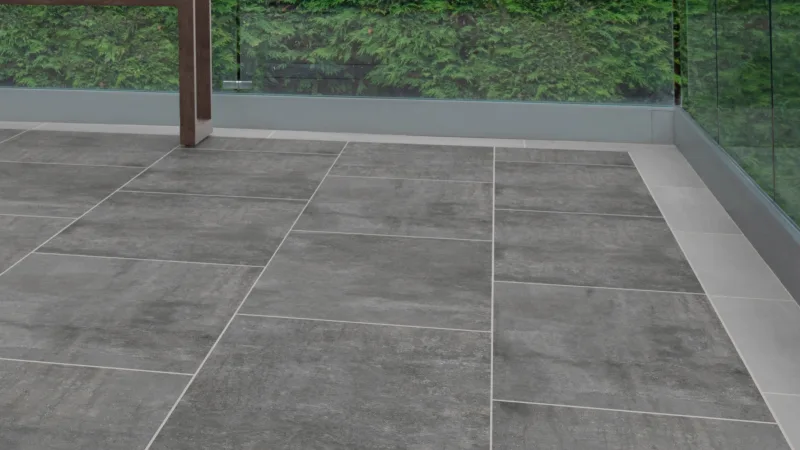If you’ve ever pondered over what goes into making grout, think of it as a culinary recipe where each ingredient plays a crucial role in the final outcome. Grout is not just a simple mixture of sand and cement; it’s a meticulous blend of various components that come together to create a durable and reliable material for your tiling needs.
But what exactly are these components, and how do they interact to form the grout you see in your home or office spaces? Let’s uncover the mystery behind the composition of grout and explore the fascinating world of its ingredients.
Basic Ingredients of Grout
- Grout, a vital component in tile installations, is primarily composed of a mixture of cement, sand, and water. This composition forms the backbone of grout, providing the necessary properties for securing tiles in place. Cement acts as the binder in grout, ensuring a strong and durable bond once it cures. The sand component adds texture and bulk to the mixture, enhancing the strength and preventing shrinkage as the grout sets. Water is crucial for activating the cement and initiating the chemical process that transforms the mixture into a solid material.
- When considering grout materials, it’s essential to select high-quality options to ensure the longevity and performance of your tile installation. Opting for premium-grade cement, fine sand particles, and clean water will result in a superior grout mixture. These materials work synergistically to create a robust and resilient grout that withstands the test of time, providing a stable foundation for your tiled surfaces.

Role of Water in Grout
- Water plays a crucial role in the chemical activation process of transforming the grout mixture into a solid material. The water content in grout is carefully calibrated to ensure optimal hydration, a process where the water reacts with the dry grout mix to form a strong and durable material.
- Grout hydration is a chemical reaction that starts as soon as water is added to the grout mixture. The water activates the binding agents in the grout, typically cement, causing them to undergo a complex series of hydration reactions. These reactions form a gel-like substance that binds the other components of the grout together.
- The amount of water added is critical; too little water can result in incomplete hydration, leading to weak and crumbly grout, while excess water can weaken the final product. Proper water content management is essential for achieving the desired strength, durability, and performance of the grout once it has fully cured.
Types of Grout Additives
- To enhance the performance and characteristics of grout, various types of additives are commonly incorporated into the mixture. Grout bonders are additives that improve the adhesion of the grout to surfaces, ensuring a strong and lasting bond. These additives are especially useful when working with challenging materials like glass or metal tiles.
- Additionally, grout sealers are additives that help to protect the grout from staining, water damage, and mold growth. They create a barrier that repels liquids and prevents them from penetrating the grout, making it easier to clean and maintain over time.
- Grout enhancers are another type of additive that can be used to improve the color, strength, or flexibility of the grout. They’re often used in situations where standard grout may not provide the desired results, such as in high-traffic areas or exterior installations.
Understanding Grout Pigments
- When considering the composition of grout, understanding the role and impact of grout pigments is essential for achieving desired aesthetic outcomes. Grout pigments are used to add color to grout, enhancing the overall look of tiled surfaces. Color blending is a critical aspect when working with grout pigments. It involves carefully mixing pigments to achieve the desired hue, ensuring consistency throughout the application process. Different pigments can be combined to create custom colors, giving you the flexibility to match or contrast with the tiles.
- Application techniques play a significant role in how grout pigments interact with the grout and tiles. Properly applying pigmented grout ensures an even distribution of color and a professional finish. Techniques such as using the right tools, following manufacturer instructions, and cleaning excess grout off tiles promptly are crucial for a successful outcome. Understanding how grout pigments work and mastering their application techniques will help you achieve stunning, long-lasting results in your tiling projects.
Specialized Grout Formulations
- Specialized grout formulations incorporate specific additives to enhance performance and address unique tiling requirements efficiently. When it comes to grout durability, manufacturers often include polymers in the formulation. These polymers increase the strength and flexibility of the grout, making it more resistant to cracking and water damage over time. Additionally, specialized grouts may contain antimicrobial agents to prevent mold and mildew growth in damp areas such as bathrooms and kitchens.
- In terms of grout color options, specialized formulations offer a wide range to suit different aesthetic preferences. From traditional white and gray to more vibrant hues, there are endless possibilities to complement various tile designs. Some formulations even include colorfast additives to prevent fading or discoloration, ensuring long-lasting vibrancy.
- Whether you need grout that can withstand heavy foot traffic, resist staining, or match a specific tile color, there’s a specialized formulation available to meet your needs. By understanding the additives and technologies incorporated into these formulations, you can choose the ideal grout for your tiling project.
Conclusion
In conclusion, grout is primarily made from a mixture of cement, sand, and water. Additives such as polymers and latex can be included to enhance properties like flexibility and strength. Grout pigments are used to achieve desired colors, while specialized formulations cater to specific needs like stain resistance or rapid setting. Understanding the composition and properties of grout is crucial for successful tile installations and maintenance.